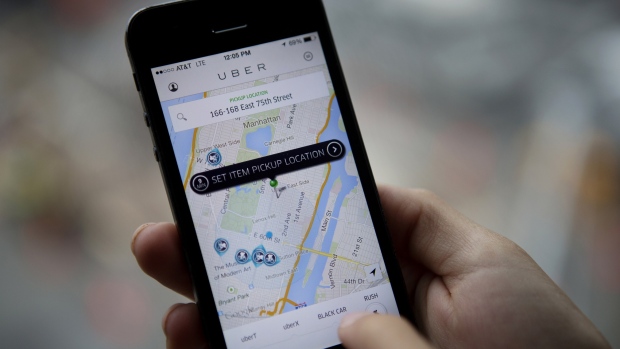Apr 11, 2019
Uber IPO filing shows US$10B in operating losses since 2016
, Bloomberg News

Uber Technologies Inc. filed for an initial public offering, starting the clock on what’s expected to be the biggest U.S. listing this year.
The U.S. ride-hailing giant lost US$3.04 billion on an operating basis in 2018 on revenue of US$11.3 billion, bringing total operating losses over the past three years to more than US$10 billion, Thursday’s filing with the U.S. Securities and Exchanges Commission shows.
The long-awaited filing gives potential investors their first look at hundreds of pages of detailed information about Uber, which was founded in 2009 and has had a winding road to the public market. Uber, which is seeking to raise about US$10 billion in its IPO, according to people familiar with the matter, plans to kick off a road show to market shares to potential investors this month and would begin trading publicly in May.
The offering is expected to be the largest U.S. IPO this year and among the 10 largest of all time on U.S. exchanges.
Uber, which has previously made public some of its financial results, disclosed further details in its filing -- including a net income of US$997 million for 2018. That profit was driven primarily by the sales of assets in Southeast Asia and Russia, as well as an increase in the estimated value of its stock in China’s largest ride-hailing company, Didi Chuxing. Those deals contributed to almost US$5 billion in what Uber called “other income.”
Uber’s global reach distinguishes it from rival Lyft Inc., which operates in the U.S. and Canada. Uber has also been reaching beyond the ride-hailing business, pitching investors a broader business that includes food and freight delivery, scooters, electric bikes and even flying cars.
Core Reliance
Still, the company is reliant on its core ride-sharing business for the vast majority of revenue. In the fourth quarter of 2018, Uber generated US$2.54 billion in adjusted net revenue, with US$2.31 billion of that coming from ridesharing. Only US$165 million in net revenue came from Uber Eats.
Uber’s filing follows rival Lyft Inc.’s US$2.34 billion IPO in March, which is the biggest U.S. IPO so far this year. Lyft increased the number of shares that were sold and priced them at US$72 per share -- the top of an elevated range -- then watched as they jumped 21 per cent at the opening bell. Since then, the stock has fallen to US$61.01 per share, sinking its market value to US$17.4 billion.
Uber filed with an initial offering amount of US$1 billion, typically a placeholder amount used to calculate fees that will change. The company applied to list on the New York Stock Exchange under the ticker UBER. Morgan Stanley and Goldman Sachs Group Inc. are leading the offering.
Here are some of the key numbers in the 285-page document:
- Uber has spent more than US$1 billion on autonomous vehicle technology to compete with Alphabet Inc., Apple Inc. and General Motors Co.
- The company’s primary user number is called MAPC -- monthly active platform consumers. That number stood at 91 million in the fourth quarter of 2018, up from 68 million in the same period of 2017.
- A roster of 29 banks in total signed on to underwrite Uber’s IPO Uber is putting aside US$300 million to make a one-time cash payout to 1.1 million qualifying drivers.
- Uber Chief Executive Officer Dara Khosrowshahi’s compensation will be in part tied to Uber maintaining a full diluted equity value of $120 billion.
- Entities affiliated with Softbank Group Corp. are Uber’s largest shareholder with 16.3 per cent of the company. Former CEO Travis Kalanick owns 8.6 per cent, while Benchmark Capital Partners holds an 11 per cent stake.






